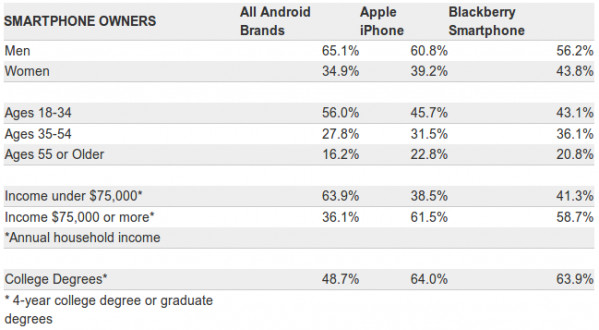Affiliate links on Android Authority may earn us a commission. Learn more.
Are iPhone users richer & better-educated than Android users?
Published onAugust 2, 2012

Image credit: Shutterstock
Media consumption differs according to platform, a study by the Reynolds Journalism Institute has found. This is also influenced by demographics, including age, education and earning capacity. In the recently-released 2012 RJI Mobile Media News Consumption Survey, researchers have determined that Apple iPhone users are generally older, better-educated and earn higher than those using Android. This may account for Apple’s market dominance over Android since the beginning.
RJI’s Roger Fidler has found that — surprise! — iOS and Android are the leading mobile platforms in the consumption of news and content from subscriptions and apps. However, a big portion of the respondents admit to using more than one platform in consuming media, which include a mix of smartphones, tablets and Android-powered e-readers.

In terms of demographics, more Android users fall under the below-34 age group. Meanwhile, iPhone and Blackberry users tend to fall under the over-35 group. In terms of income a majority of Android users earn under $75,000 annually. Most iPhone and Blackberry users earn more than this amount. Education-wise, almost half of the Android users surveyed say they have college or graduate degrees. iPhone and Blackberry users that have bachelors or post-grad degrees are at 64%.
So yes, iPhone and Blackberry users tend to be more affluent.
This might come as an affront to Android users. However, considering that some markets have a preference for iOS and Blackberry devices, then education, age and earning capacity will surely be skewed toward these levels. For example, enterprise users — including big corporations and small businesses — are found to prefer iOS over Android. As such, users will tend to have higher-paying jobs and more advanced studies than the general consumer market.
Additionally, Poynter points out that iPhone users are more attractive to news publishers, with these statistics. Consumption patterns seem to agree. A higher percentage of iPhone users subscribe to national newspapers, news magazines and other mobile publications, compared with Android.
However, going beyond the research, publishers will still need to cover a lot of ground, since less than 33% of mobile users are regular subscribers to mobile publications. This can be a good opportunity for publishers and newsstand services to tap more users and potential subscribers in order to improve their reach and revenues.